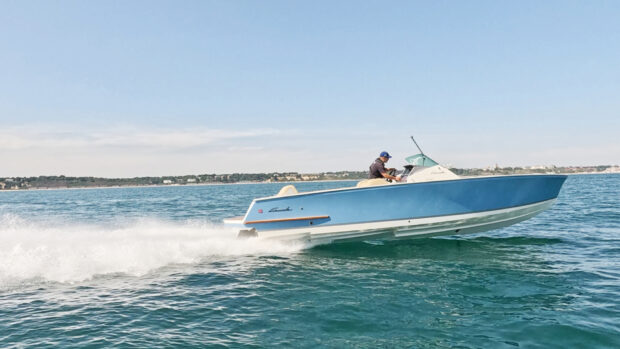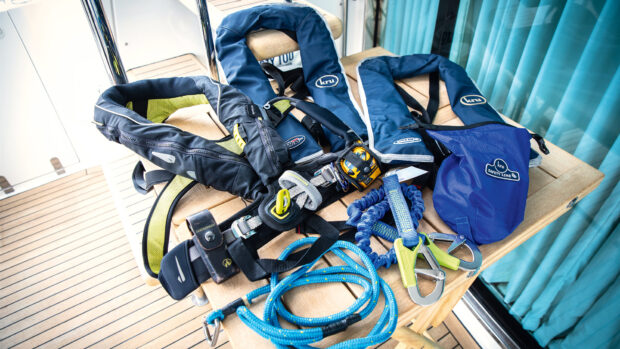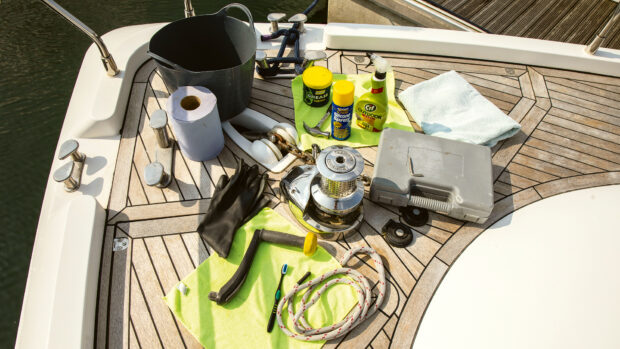Coiling and storing ropes can be one of the simplest but most frustrating tasks on a boat. Our resident boat instructor Jon Mendez explains how it’s done...
There are few things more annoying than taking a rope out of its locker only to find it’s a tangled unusable mess.
There are a multitude of ways to coil a rope neatly and many boaters will already have a favoured method. However, for those who still struggle with it, here is my preferred way of doing it with a couple of alternative finishes depending on how you want to store it.
Different ropes require slightly different techniques; traditional three-strand rope (like the white one we used in the video above) is made with a clockwise twist to the line and when you coil it, it’s easier to coil it in a clockwise manner with each coil following how the rope was made.
This helps the rope sit naturally and extends its lifespan. More modern braid-on-braid ropes are not constructed in the same manner so you don’t need to put a twist in each coil. However, it does still make the rope much neater and easier to stow and re-use.
Coiling
The first task with all rope is to run it through your hands and flake it onto the deck. This removes any twists or kinks and allows you to check that the rope hasn’t picked up any debris or snags.
A rope is generally divided into two parts; a bight, which is the slack part that you make by picking the rope up, and the standing part, which is generally the rest.
So, having picked up the rope, lay one end into your open hand (usually the left hand if you’re right-handed or vice versa) with the end facing whichever way will allow you to coil the rope in a clockwise direction.
I now tuck the elbow of the hand holding the rope end against my body to give it support and slide my free hand a full arm’s length along the rope, grasp it and bring it back across my body to my other hand.
Just before I lay this first coil onto the open hand, I twist it a ‘half turn’ in a clockwise direction. This has two purposes; firstly to get the rope to coil in line with its construction, and secondly to give nice flat coils which sit neatly and are easier to store.
I keep repeating this until I have about 1.5m of rope left. I then pass this remaining 1.5m around the back of the coils, tucking the end under a finger to hold it whilst I bring the rest round the front of the coils.
I then pass it around again but this time I cross it over the first turn to lock the coils in place. I keep going like this for four or more turns so it’s nice and secure before deciding how I want to end it.
Article continues below…

VIDEO: How To – Lasso a cleat
The ability to lasso a cleat can make coming alongside a lot safer and easier. Our step-by-step guide shows you

How to leave a berth safely in a single-engined boat
Endings
There are various different ways to end the coiling process, depending on whether you want to hang it up or place it in a locker. To hang, I just pull through an end with a long enough tail to tie it onto something.
If it’s going to be hung for a while, then you may need something more secure, so this time, pass a loop through your coils then pass the loose end through the loop, pull tight and hang up.
For stowing in a locker I pass the loop through as before but this time bring that loop up over the top of the coils and pull it tight.
This secures it really well for locker storage, but if hung up tends to leave a kink in the coils. Lastly, if the rope is too heavy or too long, coil it round a cleat or winch, or simply coil it on the deck.
MBY’S How To video series is brought to you in association with GJW Direct.










